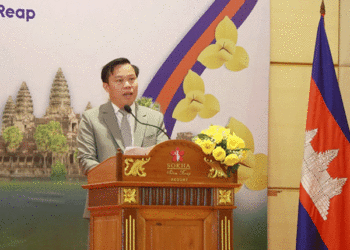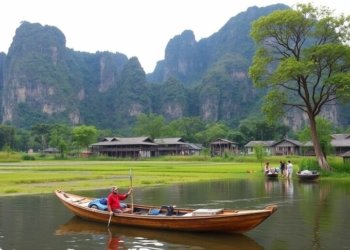One million foreigners visited the country in the first quarter of 2024. Once a remote destination, it is now popular with eco-friendly travellers. But its weak currency and high debt push it ever closer to China and Thailand in exchange for a big slice of Mekong River hydroelectric power.
Vientiane (AsiaNews) – Tourism is growing in Laos, with the number of foreign visitors hitting the one million mark in the first quarter of 2024.
In a landlocked country ruled by a still highly ideological elite, yet economically dependent on its neighbours, this is an important milestone. In fact, most tourists come from countries that border with Laos.
For the Laotian government, tourism is not only a tool for economic development but also as an opportunity to promote the local culture and traditions, generally less known but no less ancient and interesting than those of other countries in the region.
More than a third of all visitors (337,689) came from Thailand, taking advantage not only of air links but especially of direct road, fluvial, and rail connections between the two countries.
Already known for their long presence in international travel, unsurprisingly Chinese and South Koreans come in third and fourth place; what is surprising is Vietnam’s second place with 263,160 arrivals.
The Visit Laos Year 2024 initiative seeks to take advantage of the country’s growing popularity as an eco-sustainable tourism destination, capable of offering sites of environmental and natural interest, as well as a more genuine experiences of contact with local communities than elsewhere.
The economic aim is clear, namely to pursue strategies, including long-term ones, that would make tourism an important element in the country’s development plans, enabling Laos to compete with other regional destinations.
To this end, airport, road, rail, and hospitality infrastructures have been developed, showing a consistent growth in recent years, providing ever greater capacity.
For this year, the government is aiming for 4.6 million foreign tourists, a record for the Southeast Asian country, generating US .3 billion in revenue, with real GDP projected to grow by 4 per cent.
Yet, real development in the country of 7.5 million faces structural challenges, as evinced by labour migration.
Inflation remains high, expected to reach 20 per cent this year, after hitting 31 per cent last year.
Laos also has to pay US$ 2 billion in interest to China or 15 per cent of its GDP, while the local currency, the kip, depreciated by 31 per cent in 2023.
The latter has certainly helped bring in visitors, but has also made it harder to import essential resources.
The overall picture is critical and is pushing the country ever closer to China and Thailand, which have made large-scale investments (with more debt) in their smaller neighbour.
In exchange, Laos has had to make concessions, allowing foreign interests to exploit local energy resources, starting with dams and hydroelectric plants on the Mekong River and its tributaries, which come with a heavy environmental price.






